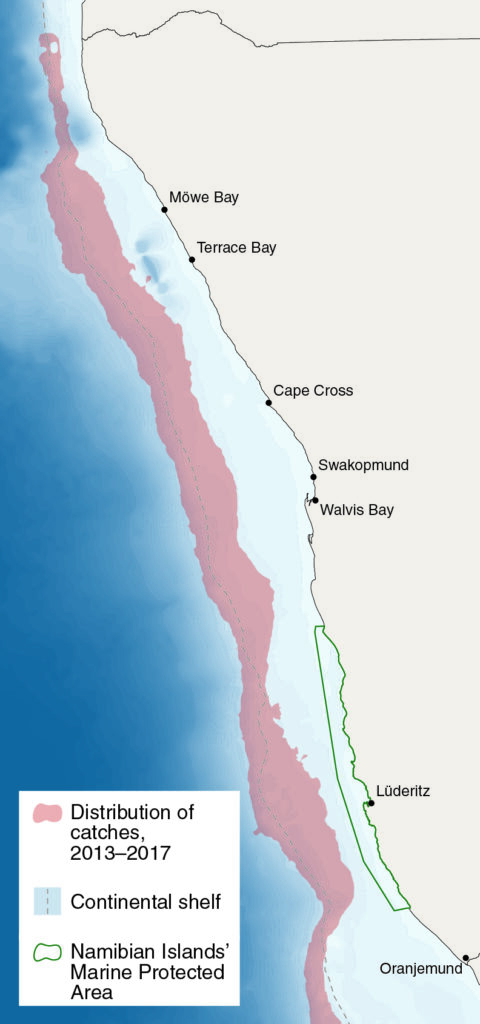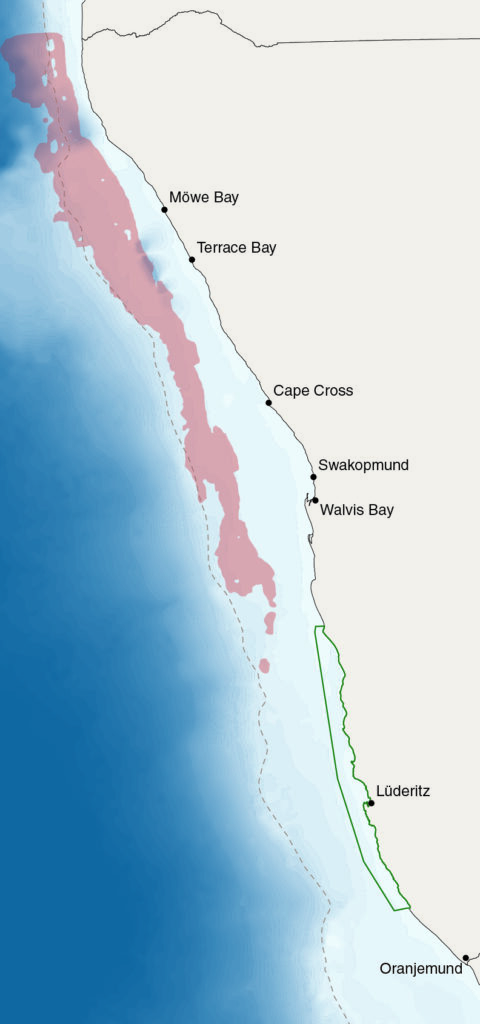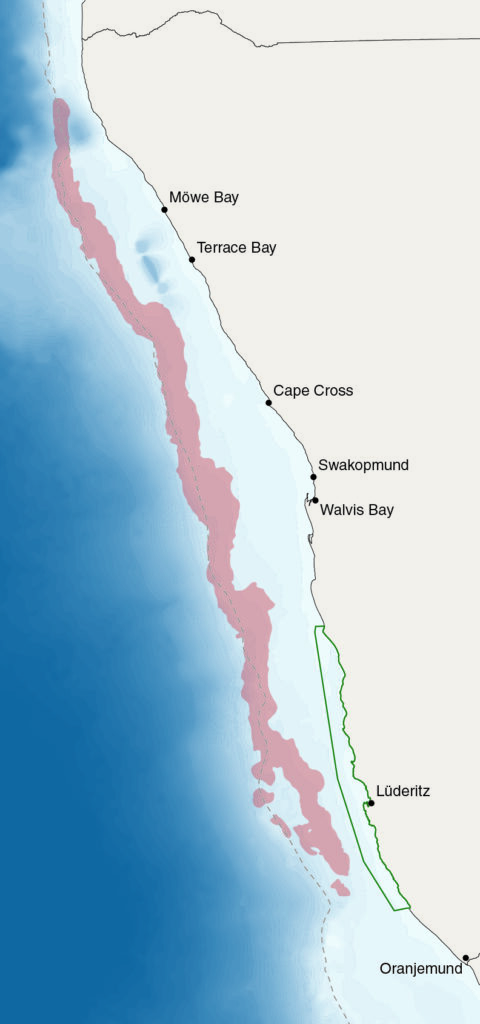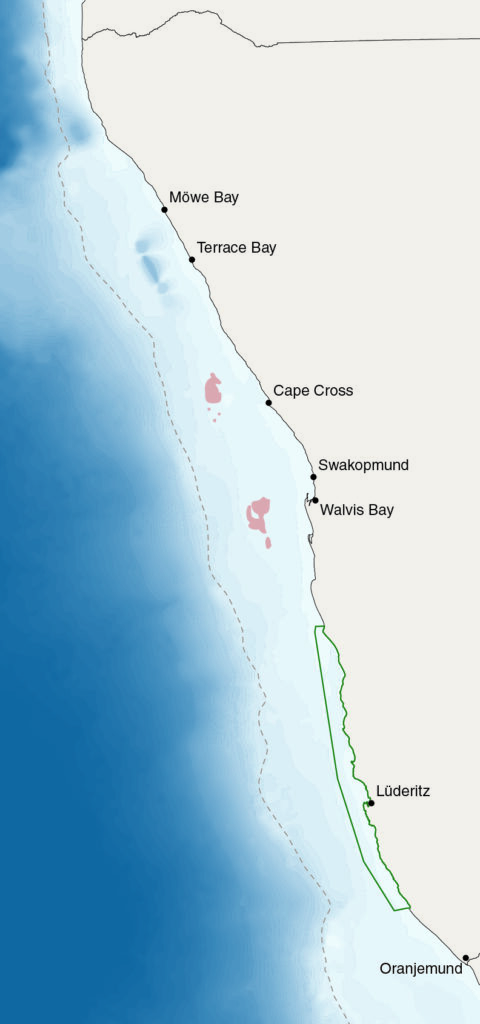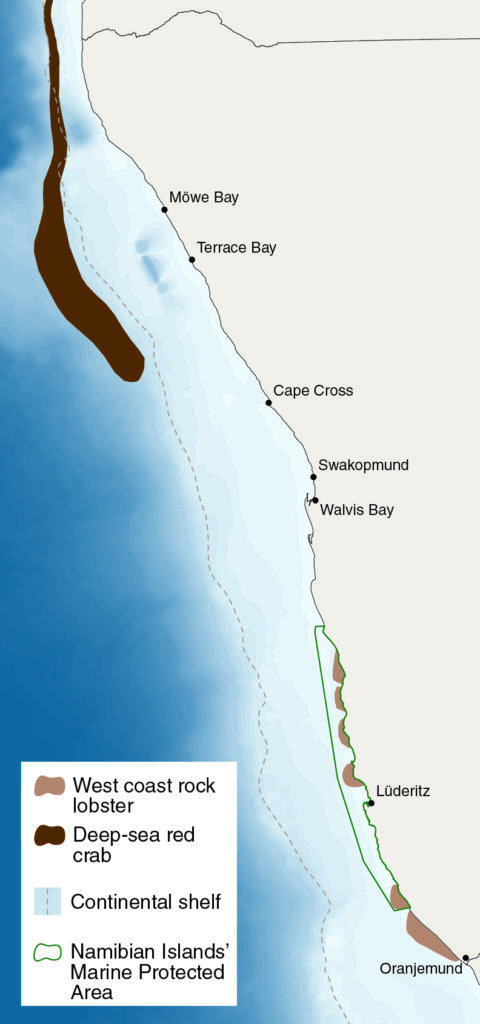The Online Guide to the Namibian Economy
The Online Guide to the
Namibian Economy

Powered by
The Online Guide to the
Namibian Economy
Powered by

Fishing
Namibia has one of the most productive fishing grounds in the world, located in the central region of the Benguela system with a coastline stretching for 1,572 kilometres from the Orange River in the south to the Kunene River in the north. The Benguela current system is one of four eastern boundary upwelling systems in the world and directly influences the productivity of Namibia’s waters. South easterly winds drive coastal upwelling, forming the Benguela Upwelling system. The cold nutrient-rich waters that upwell from around 200-300 metre depths fuel high rates of phytoplankton growth and sustain the productive Benguela ecosystem. As a result, waters within Namibia’s 200 nautical mile Exclusive Economic Zone are characterised by a high degree of biological productivity. Thanks to these conditions Namibia ranked as the fifth largest African capture fisheries nation by tonnage in 2016 after Morocco, Nigeria, South Africa and Mauritania and 36th in the world according to the most recent data from the World Bank with marine landings averaging about 475,000 tonnes.

Ministry of Fisheries and Marine Resources and Other Public Agencies
The Ministry of Fisheries and Marine Resources was historically the key policy-making institution for the industry before it was merged into the Ministry of Agriculture, Fisheries, Water and Land Reform in March 2025. The last formal policy on fisheries was the Fisheries White Paper of 2004 and the legal framework is provided by the Marine Resources Act of 2000 and the Marine Resources Amendment Act of 2015. The Ministry sets a Total Allowable Catch (TAC) annually based on evidence provided by the Marine Resources Advisory Council (MRAC) for each of six regulated species of fish: pilchard, hake, horse mackerel, crab, rock lobster, and monk. The TAC is divided into quotas which are then allocated to quota rights holders approved by the Minister. The last round of quota allocations took place in 2020. These quota holders own or operate vessels and processing facilities based mainly in Walvis Bay but also Lüderitz. Policy encourages the Namibianisation of the industry and onshore processing. Since 2020, additional quotas have been auctioned off to quota holders during the fishing season through auctions held by the Ministry of Finance and Public Enterprises. Catches are then policed by the Ministry’s Fisheries Inspectorate which has two patrol vessels (FPV Nathaniel Maxuilili and FPV Anna Kakurukaze Mungunda) and two fixed-wing aircraft (Sea Eagle I and II) to ensure they are not exceeded. Research into fisheries is conducted by the National Marine and Research Information and Research Centre (NatMIRC) based in Swakopmund. Government is a direct participant in the industry through the commercial public enterprise the National Fishing Corporation of Namibia (Fishcor) which operates under the Seaflower brand in rock lobster and white fish and is based in Lüderitz.
Source: Atlas of Namibia 2022
Source: Atlas of Namibia 2022
Source: Atlas of Namibia 2022
Source: Atlas of Namibia 2022
Source: Atlas of Namibia 2022
Total Allowable Catches 2020–2024
2020/21 | 2021/22 | 2022/23 | 2023/24 | 2024/25 | |
|---|---|---|---|---|---|
| Pilchard | 0 | 0 | 0 | 0 | 0 |
| Hake | 160,000 | 154,000 | 154,000 | 154,000 | 140,000 |
| Rock Lobster | 200 | 180 | 180 | 180 | 180 |
| Monk | 7,200 | 7,300 | 8,600 | 9,000 | 9,600 |
2020 | 2021 | 2022 | 2023 | 2024 | |
| Horse Mackerel | 330,000 | 330,000 | 330,000 | 290,000 | 270,000 |
| Crab | 3,900 | 3,900 | 4,200 | 4,200 | 4,300 |
| Tuna (Albacore) | 3,600 | 3,600 | 3,600 | 4,230 | 4,230 |
Private Sector
The fishing industry is dominated by private companies. A list of quota holders was released after the last round of quota allocations in 2020. Major Namibian companies involved in the sector include NovaNam (40% owned by Spain’s Pescanova), Hangana Seafood (owned by the Ohlthaver & List Group), Tunacor, and Seawork Fish Processors (which has no quotas of its own but processes fish from quota holders). Fishing companies are focused on the high value markets of Spain and the EU, South Africa, and Japan as well as horse mackerel to African markets.
[this is needed for pages which display statistics and charts but is not displayed unless you are logged in]
DATA - Sectoral Breakdown of GDP
| Sector | gdp | year |
|---|---|---|
| Livestock Farming | 2.5 | 2024 |
| Crop Farming | 2.1 | 2024 |
| Fishing | 2.7 | 2024 |
| Mining | 13.3 | 2024 |
| Manufacturing | 10.6 | 2024 |
| Electricity and Water | 3.6 | 2024 |
| Construction | 1.4 | 2024 |
| Trade | 11.4 | 2024 |
| Hotels | 1.6 | 2024 |
| Transport and Storage | 3.5 | 2024 |
| ICT | 1.1 | 2024 |
| Financial Intermediation | 7.7 | 2024 |
| Real Estate | 4.7 | 2024 |
| Other Services | 3.0 | 2024 |
| Public Administration | 8.6 | 2024 |
| Education | 9.1 | 2024 |
| Health | 3.3 | 2024 |
| Private Households | 0.7 | 2024 |
| Taxes less subsidies | 9.4 | 2024 |
